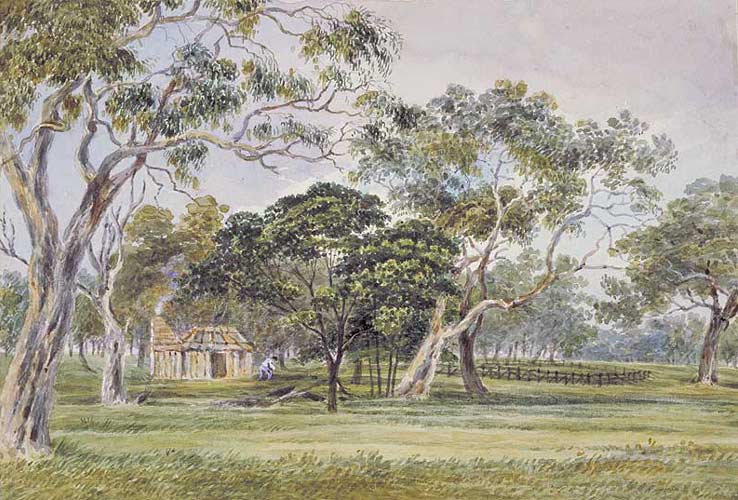 'Sheep station in the forest, Challicum, 1843'
'Sheep station in the forest, Challicum, 1843'
TLF ID R3308
This is a watercolour by Duncan Cooper that shows a sheep out-station in the forest at Challicum, a sheep run west of Ballarat in western Victoria. It depicts a slab hut set among red gums ('Eucalyptus camaldulensis'). A watchman is standing in front of the hut, and on the left of the painting is a sheepfold (enclosure) made of hurdles (portable fences). The watercolour, which measures 17.2 cm x 24.8 cm, comes from a field album that Cooper called 'The Challicum Sketchbook'.
